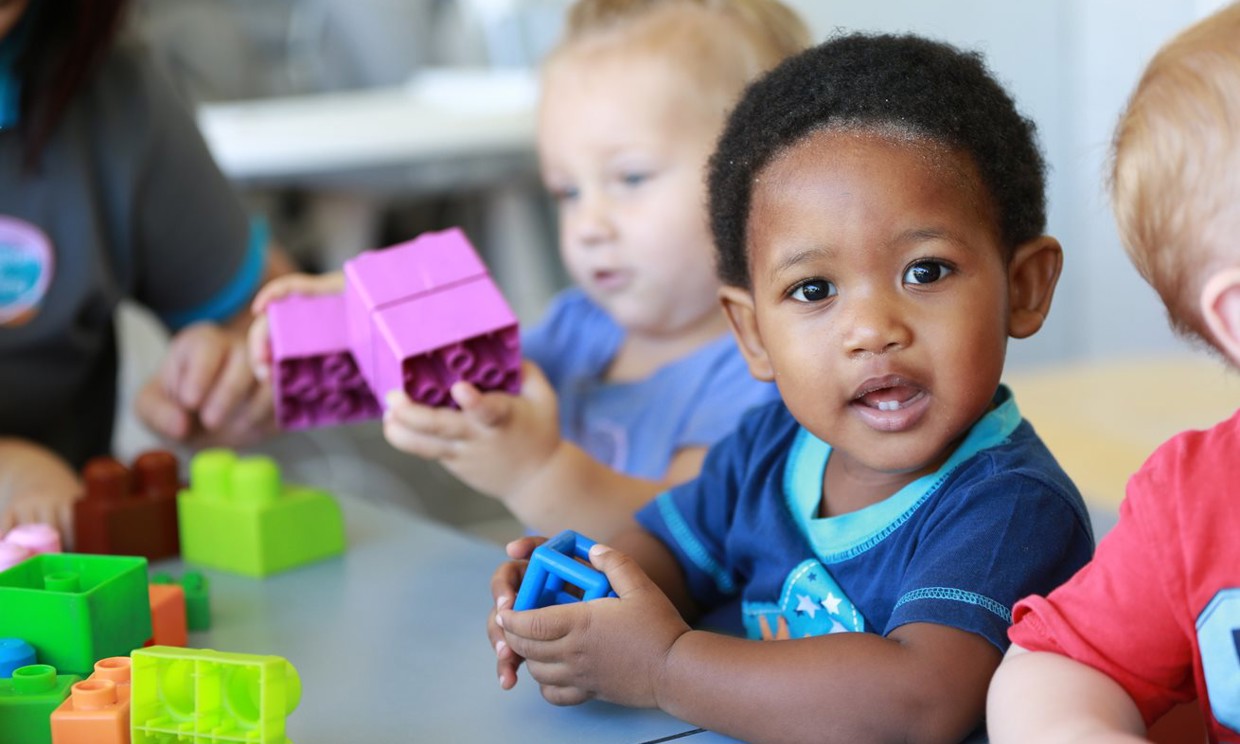Spending more money on “educational” toys is not necessary for childrens’ learning, according to Goodstart’s early learning expert Lisa Palethorpe.
With 80 per cent of a child’s brain development occurring in the first five years, parents are the most important influence on their learning and development, she said.
Last week Ms Palethorpe discussed the important role of parents in stimulating a child’s learning by making the most of daily routines to engage children in meaningful conversations and build connections.
This week she highlights the importance of open-ended items, such as buttons, sea shells and leaves, to spur a child’s imagination and creativity.
Provide children access to opened-ended items for play
Open-ended materials can create a rich and engaging environment which encourage children to use their imaginations and start conversations, Ms Palethorpe said.
Research shows that children using open-ended materials that have no specific set of directions (such as ribbons or buttons) display more creativity and problem-solving abilities than with pre-determined materials (such as a fake orange).
“For example, a plastic, fake orange will always be an orange to a child, but, diverse items such as ribbons or wood scraps expand a child’s imaginary play to be more creative.”
Ms Palethorpe recommended children have easy access to a range of materials and resources that supported their play, constructions and investigations.
“The home environment should be a breeding ground for learning so I always say keep it engaging by changing up what items are available for play, make sure there is plenty of open-ended and loose parts such as bottle caps, lids, buttons, corks as well as natural materials such as small rocks, sea shells and leaves.”
She said providing tools such as fine-line markers and pencils, construction tools like hammers, screwdrivers (used with adequate adult supervision) and connectors such as glue, tape and string enabled children to execute their own ideas.
“Join your children in their explorations of loose parts, using the materials in the same way they are using them.”
“Ask children to suggest ways to use loose parts.”
Loose parts are materials that can be moved, arranged, manipulated, stacked, carried, dumped, redesigned, combined, taken apart, or sorted in multiple ways. Ms Palethorpe said if you do make loose parts available to children, ensure there are no choking hazards and only available when parents can closely monitor their activity.
Next week, Ms Palethorpe talks about the technique of ‘sustained, shared thinking’ to extend children’s thinking.
Ms Palethorpe is national manager of Early Learning Capability at Goodstart. The Early Learning Capability Team develops high quality, evidence-based professional learning materials to improve early childhood practice and knowledge of children’s development, learning and wellbeing across Goodstart’s network of 645 centres.
With 80 per cent of a child’s brain development occurring in the first five years, parents are the most important influence on their learning and development, she said.
Last week Ms Palethorpe discussed the important role of parents in stimulating a child’s learning by making the most of daily routines to engage children in meaningful conversations and build connections.
This week she highlights the importance of open-ended items, such as buttons, sea shells and leaves, to spur a child’s imagination and creativity.
Provide children access to opened-ended items for play
Open-ended materials can create a rich and engaging environment which encourage children to use their imaginations and start conversations, Ms Palethorpe said.
Research shows that children using open-ended materials that have no specific set of directions (such as ribbons or buttons) display more creativity and problem-solving abilities than with pre-determined materials (such as a fake orange).
“For example, a plastic, fake orange will always be an orange to a child, but, diverse items such as ribbons or wood scraps expand a child’s imaginary play to be more creative.”
Ms Palethorpe recommended children have easy access to a range of materials and resources that supported their play, constructions and investigations.
“The home environment should be a breeding ground for learning so I always say keep it engaging by changing up what items are available for play, make sure there is plenty of open-ended and loose parts such as bottle caps, lids, buttons, corks as well as natural materials such as small rocks, sea shells and leaves.”
She said providing tools such as fine-line markers and pencils, construction tools like hammers, screwdrivers (used with adequate adult supervision) and connectors such as glue, tape and string enabled children to execute their own ideas.
“Join your children in their explorations of loose parts, using the materials in the same way they are using them.”
“Ask children to suggest ways to use loose parts.”
Loose parts are materials that can be moved, arranged, manipulated, stacked, carried, dumped, redesigned, combined, taken apart, or sorted in multiple ways. Ms Palethorpe said if you do make loose parts available to children, ensure there are no choking hazards and only available when parents can closely monitor their activity.
Next week, Ms Palethorpe talks about the technique of ‘sustained, shared thinking’ to extend children’s thinking.
Ms Palethorpe is national manager of Early Learning Capability at Goodstart. The Early Learning Capability Team develops high quality, evidence-based professional learning materials to improve early childhood practice and knowledge of children’s development, learning and wellbeing across Goodstart’s network of 645 centres.


